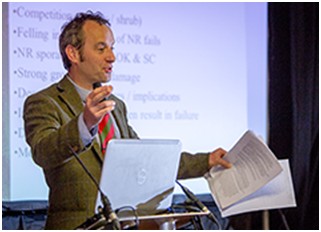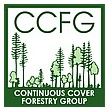Presentation – Continuous Cover Forestry in Lowland Broadleaved Woodland in Herefordshire
Speaker:

Graham Taylor
Managing Director
Pryor & Rickett Silviculture
Lugwardine
Hereford
Website: www.silviculture.co.uk
Biography:
Graham has spent over 23 years managing privately owned woodlands in Herefordshire. He joined Pryor & Rickett Silviculture in 1993 as a forester, but since 1998 has been a director of the company. PRS now have over 300 private clients spread across the full range of woodland types in England and Wales. Graham specialises in the sustainable management of Ancient Woodlands and has wide experience of balancing the needs of silvicultural, sporting and ecological interests of private woodland owners. He is currently Marches chairman of CONFOR, a trustee of Woodland Heritage and co-chair of the Future Trees Trust.
Synopsis of Presentation:
Herefordshire’s lowland woodlands present a considerable challenge when practising CCF. The underlying Old Red Sandstone gives rise to hugely fertile deep brown earth soils. These combine with an equitable local climate to provide an excellent medium for tree growth, but also for weed competition. The application of CCF with such strong competition has involved developing longer term understorey management to increase shade to the forest floor.
Seeding cycles for Oak and Sweet chestnut are long. Siboria batschiana infection results in large losses of sessile oak mast in the forest. Masting of many species is infrequent, hence careful seeding canopy development is an ongoing process. Enhanced tree growth and the proximity of grey squirrel nesting / feeding habitat requires a zero tolerance landscape scale control to achieve long term objectives. With rising deer populations, landscape scale deer management has also become pre-requisite for success.
Despite these pressures, CCF has been achieved, working with a pragmatic estate wide small group selection system, utilising a reactive approach to rare pockets of advance natural regeneration and an interventionist approach through planting, with transplants derived from seed gathered from selected estate ‘Plus trees’. Selective crop protection is applied.
Conference Resources:
- Download/View Graham Taylor’s Presentation [PDF, 4.8 MB]
- Watch Graham Taylor’s Presentation [Youtube]


